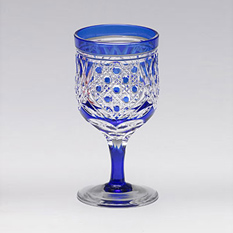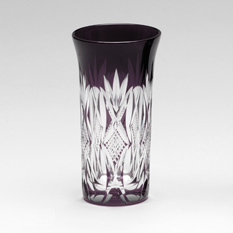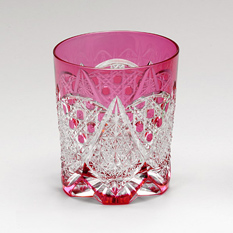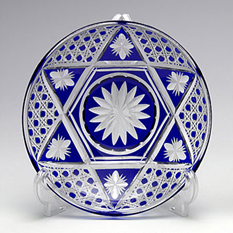Kiriko refers to a traditional glass cutting technique. The first cut glass items were produced in Japan during the Edo Period (1603-1868) and became common after the Meiji Period (1868-1912). The city of Edo (present-day Tokyo) became the largest producer of Kiriko glassware. Because the silica stones used to make glass were transported by boat from the Tohoku region to Tokyo, Kiriko spread along the Arakawa river. Kiriko made in Tokyo is called Edo Kiriko and was designated as a Traditional Craft by the Japanese government in 2002. Kiriko has another well-known variant called Satsuma Kiriko, which originated in Satsuma Domain (present-day Kagoshima Prefecture). In contrast to Edo Kiriko which has been inherited for over 100 years, the production of Satsuma Kiriko was stopped by the death of the lord of Satsuma and the Anglo-Satsuma War in 1863. Once called "Phantom Kiriko", production of Satsuma Kiriko was restored in 1985.
There are five steps to making Edo Kiriko:
1. The basic design is drawn on the surface of the glass.
2. Rough cutting of thicker lines.
3. Finer cutting of intricate designs.
4. Smooth out the surface of the design using a griding wheel.
5. Polish the surface of the entire glass.
While Kiriko in its early days used clear glass, nowadays most Kiriko works use colored glass (red, blue, etc.) that become clear when engraved. The detailed design is never drafted on the glass. A work of Edo Kiriko is the result of the high skills of the craftsman.
Edo Kiriko glass is coveted for its intricate patterns. The patterns are derived from traditional tools used in daily life and from patterns found in nature, including Nanako (fish egg pattern), bamboo leaves, chrysanthemum and Kagome (basket weave). Edo Kiriko uniquely uses a combination of symmetrical, straight line designs. The cut surface shines beautifully due to its prism effect. Edo Kiriko is perfect for use as tableware when serving guests as well as for display. Since Edo Kiriko uses high-class crystal glass, it is also pefect as a gift for your parents or elders.
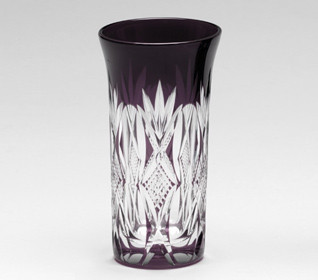
Bamboo Leaf and Nanako Pattern
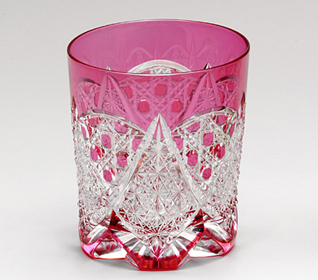
Kagome and Chrysanthemum Pattern
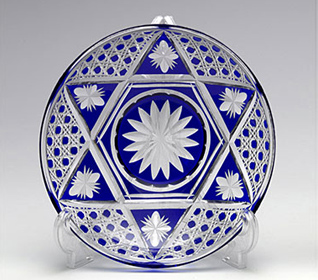
Hakkaku Kagome and Flower Pattern
![Learn the keywords for Japanese crafts and traditional culture. 04 [Edo-kiriko]](/guide/eg/special/special_kyeword_04/img/mainimage.jpg)
